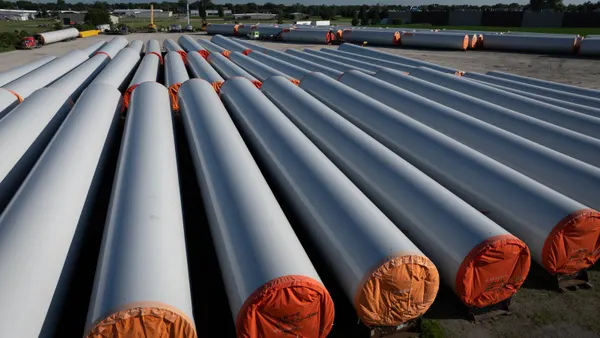Over the past two months, the U.S. and its territories have been inundated with what might seem like a never-ending string of natural disasters. Hurricanes Harvey, Irma, Nate and Maria caused hundreds of billions in damage, with Morgan Stanley reporting that it expects insurance industry claims of approximately $100 billion for this year's storm season.
Miles away from the hurricane-damaged South, the country's West Coast has been dealt its own set of disasters to reckon with. Earlier this month, raging Northern California wildfires burned through more than 200,000 acres, driving residents from their homes and leaving an estimated price tag of $65 billion — so far.
Many of the fires are reaching containment, though they might not be fully contained until sometime this week. As of Thursday, wildfire-related insurance claims had already reached $1 billion.
While construction sites in the direct paths of these natural threats were likely evacuated before they could have harmed construction workers or other field personnel, there are some instances where those working on the projects around a disaster may experience some of those disasters' effects. Smoke, minor flooding and high winds may be minor compared to what those in the middle of these events have to endure, but they can still be hazardous to workers on the periphery.
With hurricane recovery underway along the Gulf Coast and elsewhere, it's the smoke from the California wildfires that still remains a viable threat to those in close proximity. McCarthy Building Companies is working on the $535 million Marin General Hospital Replacement Building in Greenbrae, CA. The construction site, according to John Moore, a senior safety manager at McCarthy, is approximately 15 to 20 miles from Sonoma, CA — one of the areas that has been hit hardest by the wildfires.
"[The smoke] was bad for about a week [until firefighters] got a grip on the fire and the wind changed," Moore said. On Oct. 9, as the fires began to rage full-force, he said workers had to drive through smoke and ash to get to the site. Once on the job, the project team began monitoring the air quality via onsite tools and checking in with the air quality indexes on AirNow and Weather Underground. Those readings run from "good" all the way up to "hazardous."
"In the morning, it would be moderate, and once it hit the 'unhealthy for sensitive groups' [reading], we'd let everyone know." Moore said the company would send those with asthma, lung disease, heart disease or any other condition that made them sensitive to the smoke home for the day. For those who stayed, disposable dust masks, he said, helped mitigate the effects of the smoke.
As it turns out, the smoke was too much on the first half-week of the fires, leading McCarthy to close the job.
Since workers have returned, Moore said, looking out for each other, in addition to air quality readings, has been the order of the day. Burning throats or eyes, coughing — these are indications that the air quality is simply not safe enough for some workers. And even though some might try to stay so as not to lose out on a paycheck or fall behind in their work, Moore said, that's secondary to employee wellbeing. "We're not going to push production over safety," he said.
But smoke from wildfires isn't the only threat. High winds, minor flooding and lightning storms can also pose relatively minor risks that can magnify to significant hazards if left unchecked.
Charlie Crofford, safety manager for Dallas-based C1S Group, said the company has procedures in place to protect employees from any potential danger from the elements.
During thunderstorms, Crofford said, if lightning comes within 10 miles of the site, C1S has its employees take shelter indoors for 30 minutes until after the storm has passed.
"I can't stop them from leaving," he said, "But I can stop them from working outside."
High winds, too, can accompany storms. Those winds can turn materials like large pieces of plywood into parachutes and thus into potential threats. When winds reach what C1S deems unsafe speeds, Crofford said, workers are told to come down from rooftops or any other high spots, and crews to secure loose materials that could otherwise hurt people or damage property.
Occasional ice, minor flooding, ozone days — these are also conditions Crofford said warrant some special precautions. While most of these conditions simply warrant some advance planning, the ultimate goal is still the same, and that is to keep employees safe.













